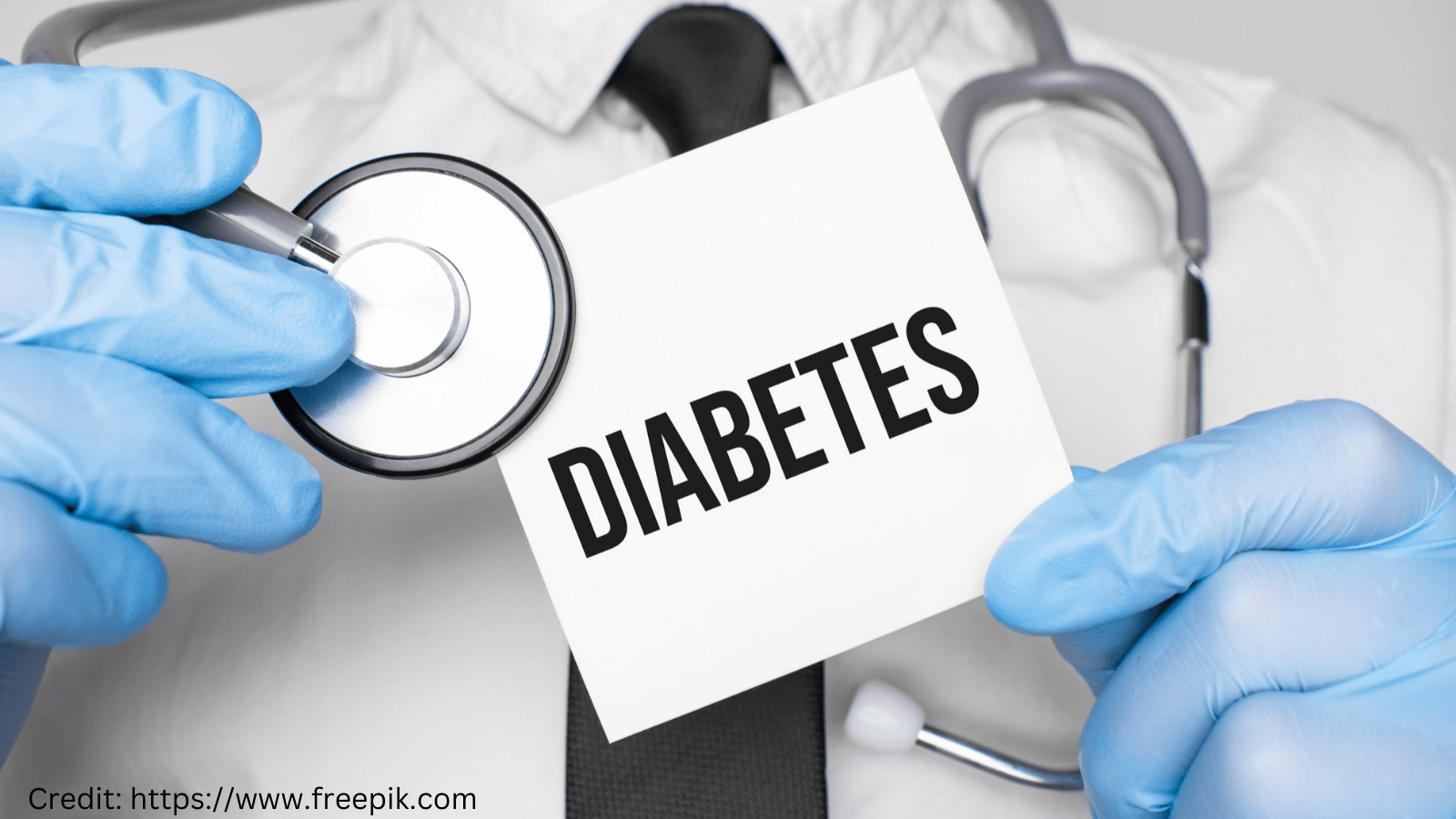Unusual symptoms of diabetes can often go unnoticed, even though they may be early indicators of the condition.Diabetes is a condition that can cause very unusual symptoms, even those people would not immediately think of being related to the blood sugar disease.
You may be aware of some common signs like being extremely thirsty, having to go pee all the time and unexplained weight loss that are obvious hints at diabetes.
Knowing these first signs of diabetes is instrumental in maintaining your wellbeing too. Some less common symptoms of diabetes can be signs that higher levels of blood sugar are causing things to go wrong in your body.
In this blog post, we explore these overlooked symptoms and discuss how to catch high blood sugar symptoms and signs before they escalate.
What is Diabetes?
Diabetes is a type of chronic disease (chronic) that occurs when your blood glucose or sugar cannot be used properly.
Your cells rely on glucose for every day of energy, however they need insulin to pass into your cells out of the bloodstream.
In diabetic individuals, however, this process gets disturbed and the result of a high blood sugar level that stays there is hyperglycemia. When left unmanaged, high blood sugar can wreak havoc on your body in a variety of ways.
There are three main types of diabetes:
- Type 1 Diabetes
The type of diabetes can get diagnosed in the youth or early adult life, however, it may also develop at any age.
It is an autoimmune disease, i.e. the immune cells commonly known as killer T-cells attack insulin producing β-islet cells in pancreas? Consequently, the body makes very little or no insulin and people have to inject (or pump) this vital hormone in order to control their blood sugar.
High blood sugar symptoms are frequently seen at the start of Type 1 diabetes in contrast to type 2.
- Type 2 Diabetes
The most common form of the disease is type 2 diabetes, usually seen in adults but now increasingly being diagnosed among children as obesity rates rise. Type 2 diabetes occurs when the body becomes resistant to insulin or doesn’t make enough insulin to keep normal glucose levels.
And, people with Type 2 diabetes may not experience obvious signs or symptoms of diabetes that can make it more difficult to detect in its early stages.
While other signs — like slow-healing wounds or frequent infections — may be too subtle, these early warning signs of diabetes are often overlooked until blood sugar levels have dangerously elevated.
- Gestational Diabetes
Gestational diabetes is developed only in pregnancy and typically disappears after giving birth. On the other hand, women with a history of gestational diabetes are themselves at increased risk for developing Type 2 diabetes.
It is possible to control gestational diabetes by monitoring blood sugar, as well as following a special diet and in some cases taking medication.
How Diabetes Affects the Body
A parent considers their Diabetes extends throughout different systems within your body. If blood sugar is high for a long time, complications can develop.
- Heart disease and stroke: a high blood sugar damages the walls of small arteries. This can lead to heart diseases and strokes.
- Kidney injury : Glomerular filtration rate should be high but GFR of such patients is disturbed because the kidneys work more to clean off excess glucose from blood leading to chronic disease or even kidney damage in some cases.
- Nerve damage (neuropathy): Diabetes can also be responsible for damaging the nerves, causing symptoms such as tingling, numbness or pain in your hands and feet.
- Eye disorders: Skim elevation in blood glucose levels can damage the visual cells and blood vessels, which culminates to situations like diabetic retinopathy due to this condition.
Recognizing the Symptoms of High Blood Sugar
The signs of high blood sugar can be felt differently according to the person and will not necessarily happen immediately, but over time in diabetics. Different high blood sugar symptoms and signs include extreme thirst, frequent urination etc.
That said, there are more uncommon symptoms of diabetes — which we delve into in this piece — that you may not readily associate with high blood sugar and suggest early detection is especially problematic.

Credit: https://www.freepik.com
Types of Diabetes and How Symptoms Differ
Uncommon Symptoms of Diabetes: Unusual symptoms of diabetes may greatly differ, as it depends on the type a person has. While being symptomatic of all forms, others are more disease-specific.
If you know the three major forms of diabetes (Type 1, Type 2 and Gestational Diabetes) along with their warning signs then you’ll be able to spot those easily overlooked and unusual symptoms of diabetes.
In the following, we will assess how each type presents and delude itself but also show some well-hidden signs which might be hard to notice.
1. Sudden onset symptom of type 1 diabetes
Type 1 diabetes is an autoimmune disease that commonly begins quickly, with signs and symptoms developing over a few weeks. It is most often diagnosed in children, adolescents and young adults but it can develop at any age.
Symptoms Involved: The common high blood sugar symptoms show increased thirst, excessive urination and constant hunger with some weight loss.
Uncommon Symptoms: Commonly described symptoms of diabetes in Type 1 are as follows fruity smelling breath (a sign for diabetic ketoacidosis), double vision, sudden changes of mood.
These symptoms are mostly a miss, leading to the wrong guess and taking some time before it gets diagnosed.
2. Type 2 Diabetes: Symptoms Slowly Develop
Diabetes of the type 2 variety comes on more gradually — it can take years to be diagnosed, which is one reason those less-common diabetes symptoms may well go unnoticed.
Type II, however more common in adults – though lifestyle is also resulting children and younger people being diagnosed with this type
Symptoms: Initial signs include common high blood sugar symptoms where you feel more thirsty, pee a lot and very tired all the time. So many of these symptoms are overlooked and excused away as merely getting older or stressed.
The Hidden Symptoms: A number of people with Type 2 diabetes have symptoms that you might not expect are related to the disease, such as slow-healing wounds and dark patches of skin (a condition called acanthosis nigricans), or tingling in your hands and feet.
These symptoms may be silent or attributed to underspecified medical conditions, subsequently making it harder for doctors to diagnose sooner stages.
3. My Gestational Diabetes Can Go Away But Oh Are the Symptoms Risky
Pregnancy related diabetes: When you have diabetes but it goes away after the baby is born. However, one has to be aware of the unusual symptoms of diabetes that can happen during this phase and untreated gestational diabetes could result in problems for both mom as well as baby.
Symptoms: Fatigue, increased thirst and frequent urination as mentioned for other types of diabetes 11.
Different Symptoms: Further unusual signs involving type 2 diabetes from pregnancy incorporate fuzzy eyesight, along with surplus bacterial expansion.
Since some of these symptoms are similar to those associated with normal pregnancy, gestational diabetes frequently goes undiagnosed until routine testing is performed.
How The Symptoms Are Different Between Types
Type 1, Type 2 and Gestational diabetes all have symptomsTII (type II) but the onset can vary up until complications set in starting the time of diagnosis forward for.
Fast symptoms are common for Type 1 diabetes
Most of the people with type 2 diabetes have slow developing symptoms which appear over many years.
The early symptoms of most cases of gestational diabetes are mild or not noticeable at all however as the disease is untreated, serious risks for both mother and child can be seen.
Understanding these unusual symptoms of diabetes for each type is vital to early detection, resulting in better control and long-term health prospects.
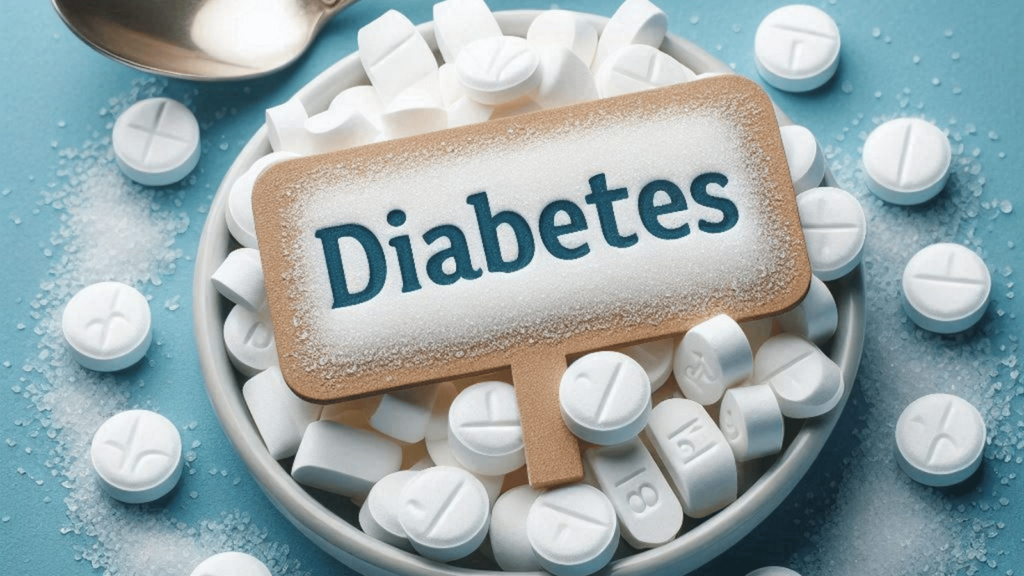
Credit: https://www.freepik.com
Top 10 Unusual Symptoms of Diabetes
For diabetes, we all know the basic signs – excessive drinking and peeing as well as tiredness. Yet there are many other more bizarre symptoms of diabetes that you may never have heard about or assumed they were a symptom of something else.
Knowing these subtle signals of diabetes is key to get a diagnosis earlier rather than later, and effectively control the condition. So here are top 10 uncommon and unusual symptoms of diabetes that you should know:
1. Dark Skin (Acanthosis Nigricans)
One of the not so well-known early warning signs of diabetes is having dark velvety patches around your neck, armpits or groin.
This phenomenon, called acanthosis nigricans , is often a sign of high blood sugar symptoms and insulin resistance. If the skin starts to change color and darkens, then it is time for a check on your blood sugar.
2. Frequent Yeast Infections
Chronic or Recurrent Yeast Infections: Controlling your diabetes also helps to control yeast infections, which are a common symptom of undiagnosed and poorly managed diabetes.
High blood sugar levels create the perfect conditions for yeast, especially damp warm parts of us. These are lesser-known and unusual symptoms of diabetes that could suggest you’re not managing your blood sugar level correctly.
3. Blurry Vision
If you have diabetes, changes in the volume of your eye lens can change how light is focusing on your retina which may further result in blurry vision.
The blurriness comes from the fact that when your glucose is high, fluid levels in eyes can change and vision temporarily affected.
4. Slow-Healing Wounds
If you notice that minor cuts, scrapes or sores take a long time to heal, then diabetic neuropathy may also be producing symptoms.
When the blood sugar rises too high, that level of glucose can break down your blood vessels and block circulation so it takes longer for you to heal naturally. This is another symptom of high blood sugar level that cannot be ignored after all.
5. Hands and feet may tingle or become numb.
Diabetic neuropathy (nerve injury) is a common complication of long-term Hyperglycemia. But symptoms may begin as a tingling or numbness in the hands, feet, or legs.
It is a little less common to develop this symptom of diabetes, which can be difficult to catch before it really takes hold.
6. Unexpected Loss or Gain of Weight
However, one of those Type 2 diabetes warning signs symptoms students should pay attention to is the early weight loss and constant blood sugar levels are dangerously high or low.
Conversely, individuals with Type 2 diabetes can gain weight quickly for the same reason (insulin resistance). These are abnormal symptoms associated with diabetes, both of which require medical evaluation.
7. Increased Itching or Dry Skin
Uncontrolled blood sugar can lead to symptoms from eating causing nerve and circulation problems that results in itching — especially around your lower legs— is a sign of unrelenting hyperglycaemia.
Dry, cracked skin is another sign that your blood sugar levels may be too high, which causes a host of issues but something you should consider as one of the hidden and unusual symptoms of diabetes.
8. Hearing Problems
One of the strange diabetes symptoms is hearing loss or difficulty in listening. Diabetes may harm the blood vessels and nerves in your inner ear affecting hearing, recent studies indicate.
Should you be struggling with your ears, it is worth investigating whether any of the symptoms mentioned are related to high blood sugar.
9. Irritability and Mood Swings
Getting diabetes is not just a change in your physical health. Irritability, mood swings or symptoms associated with depression can indicate fluctuating blood sugar levels.
While these mental health problems are not directly associated with diabetes — they can be psychological and unusual symptoms of diabetes without you even realizing that, for example diabetes-induced brain fog or irritability pre-diagnosis and also post- mellitus however underlying blood sugar management issues.
10. Fruity-Smelling Breath
Fruity-smelling breath: This sweet smell can be a sign of low insulin levels and diabetic ketoacidosis (DKA), which is an emergency. The body produces ketones, and it is the fragrance of this scent that emanates.
If you begin to smell this bizarre, fruity odor in your breath the most urgent is: seek medical care immediately.
Although the symptoms of diabetes I told you about are not familiar, knowing them can help control and early detection easier.
If you are experiencing any of the symptoms mentioned above, go see a healthcare professional for an accurate diagnosis as soon as possible.
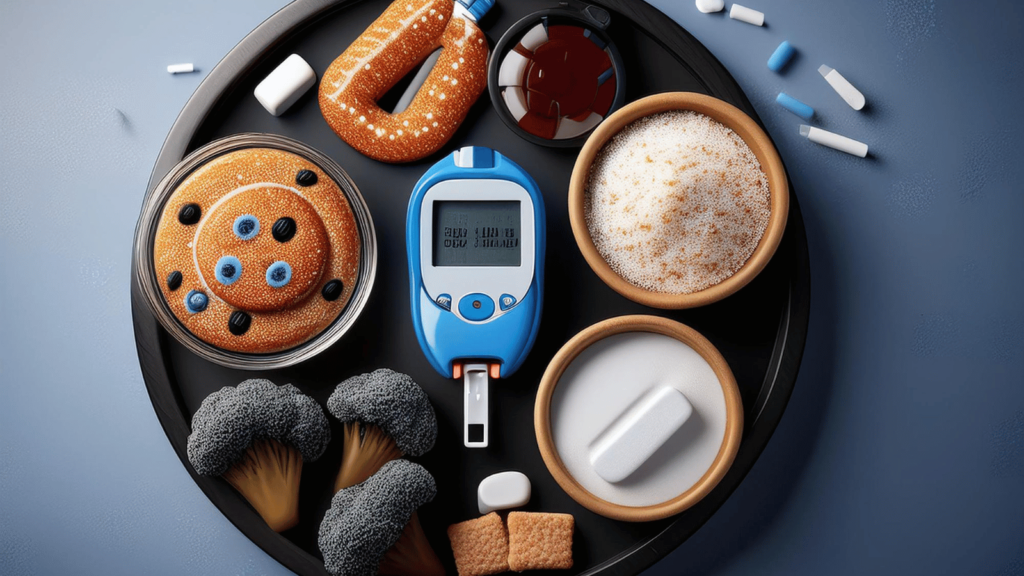
Credit: https://www.freepik.com
Underlying Causes of These Unusual Symptoms
This is because of the impact high blood sugar levels have on various systems within the body, leading to unusual symptoms of diabetes. Other odd symptoms unrelated to diabetes are a direct symptom of the body’s inability to regulate glucose.
This article takes you through the hidden and unusual symptoms of diabetes and their causes so as not to be surprised, also an action time chart can prevent a complicated situation from arising.
1. Graves Disease and Blood Sugar issues — Insulin Resistance
Insulin resistance, particularly in Type 2 diabetes is one of the main reasons behind unusual symptoms of diabetes. Insulin is a hormone that helps glucose move into your cells to be used for energy.
One of these high blood sugar symptoms and signs is the increase in blood glucose levels caused by insulin resistance.
If your body does not use insulin well, this imbalance can lead to symptoms like dark patches of skin (acanthosis nigricans), weight gain and slow-healing wounds that are due the blood becoming thick with sugar because it is unable to be used efficiently in our bodies.
2. Diabetic Neuropathy (Nerve Damage)
Years of uncontrolled high blood sugar can cause nerves anywhere in the body (known as diabetic neuropathy) to become damaged. This is one of the core reasons for some incredible symptoms.
If you leave nerve damage untreated, it can also lead to serious complications such as problems with balance and muscle weakness. It is a creeping beast, and as such one of the more insidious and unusual symptoms with diabetes – alongside weight loss in Type 1 (as mentioned before) this time for neuropathy.
3. Poor Circulation
Poor Blood Circulation: High blood sugar also damages the blood vessels, especially in the skin.
That can mean slow-healing sores, dry skin that sticks around and the itchiness never seems to go away — all symptoms you might not immediately attribute to high blood sugar levels.
Frequent infections and delayed healing are other signs of diabetes as a result of poor circulation, which is why it’s so essential to catch these odd symptoms early.
4. Hormonal Imbalance
Unusual symptoms of diabetes often may also be a result of hormonal imbalances. As an example, unexpected weight loss or gain can influence Insulin and blood sugar fluctuation.
In Type 1 diabetes the body may have difficulty using glucose as energy leading to weight loss, whereas insulin resistance can cause gaining of weights in cases involving type two.
That increase in sugar promotes yeast growth, which is why so many people with diabetes suffer through frequent bouts of candidiasis.
5. Fluid Imbalance
High blood sugar symptoms can lead to changes in the body’s fluid levels. This is especially true for symptoms such as blurry vision, and increase in frequency of urination.
As glucose levels skyrocket, more and more fluid is pulled from the tissues to try to wash out that excess sugar through urination (lasting symptom #1) — leaving you dehydrated while your arteries acquire some erection-threatening plaque.
This fluid imbalance —which is considered one of the hidden and unusual symptoms of diabetes that when untreated can lead to more serious complications.
6. Immune System Dysfunction
Diabetes impact on immune system: Diabetes impairs the ability of our white blood cells (WBCs) to fight infections, due to which people with it have a higher tendency for getting infections frequently and wounds not healing well.
It damages the immune system, which will be unable to fight back; that is why bacteria and even fungus easily take over in a diabetic body.
This is why those with poorly managed blood sugar levels can suffer from things like frequent yeast infections as well, and other rare symptoms of diabetes — such as skin infections.
7. The Dangerous Effects of Ketone Production in Type 1 Diabetes
There’s a concise explanation of the physiological effects caused by ketone production which can lead to ketoacidosis.
In the case of Type 1 diabetes, if there is not enough insulin to process glucose your body may begin breaking down fat for energy. Ketones are produced, and a phenomenon known as ketotic breath resulting in a fruity odor later gives patients with DKA (diabetic ketoacidosis) — the smell of sweet acetone on the breath.
In general, fruity type of breath-smelling is potentially life-threatening and should prompt rapid medical treatment as this could signal the existence of an acute metabolic emergency called DKA.
8. Aging Skin and Insulin Resistance
Acanthosis nigricans, which produces dark patches of skin — is most common in people who are overweight and remain insulin resistant with their high blood sugar level.
All of this skin growth can occur because the excess insulin that is trying to push sugars out into storage also tries to make things grow, especially skin cells — thicker and velvety patches seen often on the neck, armpits or in the groin area.
This may seem like a mild symptom, but it is one of the primary warning signs for diabetes and should necessitate seeing your doctor.
Recognizing the Signs Early
If you know what is behind these unusual symptoms of diabetes, then these early signals should be traced proactively and daunted before things get scary!
Whether it’s because of nerve damage, blood vessels unable to circulate clean oxygen and important nutrients that would allow your feet function properly while performing activities.
These differing symptoms are all essentially how the body signals something is not right within it! Complications could be prevented if symptoms are recognised in the early stages.
How These Symptoms Differ Between Type 1 and Type 2 Diabetes
Though Type 1 and Type 2 diabetes have a high blood sugar common denominator, the symptoms can appear quite different between them.
Early diagnosis and treatment of diabetes requires understanding what atypical symptoms are unique to Type 1 or Type 2. This can mean that symptoms may arise quickly, and be severe particularly in type 1.
1. Onset of Symptoms
The speed at which symptoms are manifest is one of the most prominent differences between Type 1 diabetes and Type 2.
Type 1 Diabetes: Symptoms of Type 1 diabetes typically come on suddenly and may develop in a matter of weeks. Symptoms of severe high blood sugar often appear early in those with Type 1, some symptoms include: excessive thirst and urination, as well dramatic weight loss.
Type 2 diabetes: Conversely, Type 2 diabetes symptoms may occur slowly over many months to even years.
Type 2 diabetes: Most people with Type 2 are not aware they have the condition — probably because typical warning signs or some unusual symptoms of diabetes can seem benign and be easily mistaken for something you expect to happen when you get older or feel exhausted.
This period of time is long enough that it may contribute to Type 2 diabetes being harder to diagnose until more advanced stages.
2. Severity of Symptoms
Type 1 and Type 2 diabetes symptoms may also vary in the degree to which they show, especially those more odd diabetes signs.
Type 1 Diabetes : As this type does not produce insulin, symptoms such as weight loss or fatigue and blurred vision are usually most slept for early times.
Individuals with Type 1 are also at a greater risk of experiencing diabetic ketoacidosis (DKA), which can lead to fruity smelling breath, nausea, or vomiting. So one of the odd presentations in diabetes, such as DKA, is more acute in Type 1 situations.
Type 2 Diabetes: In type 2 diabetes, symptoms may be more mild at first compared to other types making this easier for people to ignore. Unusual symptoms of diabetes, such as wounds healing very slowly, pain or tingling in the hands / feet, dark patches of skin (acanthosis nigricans) may appear over time.
These complications are due to the sluggish gradual undetected high blood sugar symptoms and insulin resistance often presented when patients develop Type 2.
3. Subtle Signs and Symptoms
There are hidden and unusual symptoms of diabetes which can vary depending on the various stages it is growing; and how Type 1 or Type 2 types develop.
Type 1 Diabetes: Symptoms of Type 1 diabetes appear suddenly and are very severe as the body’s ability to produce insulin stops. Someone with Type 1, for instance, may drop weight rapidly without an apparent reason and start peeing more often almost immediately.
Since Type 1 is often first diagnosed in children or young adults, the parents of affected individuals might notice these symptoms and seek emergency treatment for their child.
Type 2 Diabetes: The unusual symptoms of diabetes that go unnoticed in Type 2 diabetics are quite a bit less obvious. As an example, the actual sense of pins and needles or perhaps tingling in your extremities (neuropathy) can turn out from higher blood sugar levels frequently activating harm.
Frequent yeast infections and dark patches of skin can be overlooked or blamed on another problem. That makes it more difficult to detect Type 2 diabetes early, which is why most cases of the disease are diagnosed only after complications occur.
4. The contribution of insulin resistance and deficiency
How the insulin works in Type 1 diabetes and again how it is different from that of type 2 will play an important role while understanding these unusual symptoms of diabetes.
Type 1 Diabetes: occurs when the pancreas makes little or no insulin, so this type has more acute symptoms that also develop much faster.
Without insulin, the body starts breaking down fat for fuel, which causes ketoacidosis and symptoms such as a fruity odor to breath.
Since insulin is the hormone necessary to lower blood sugar levels, Type 1 high blood sugar symptoms tend to be more pronounced and require immediate initiation of Insulin.
Type 2 Diabetes: In the second type, closely related to what we do with our lifestyle and low activity levels.
For more information about obesity is why that blocks insulin action (resistance). That is why the onset of symptoms tends to be more insidious because it causes insulin resistance, which makes blood sugar levels rise less quickly.
Skin changes from diabetes (acanthosis nigricans) and frequent infections are atypical symptoms of insulin resistance, more seen in Type 2 because the sugar levels have been high for longer periods.
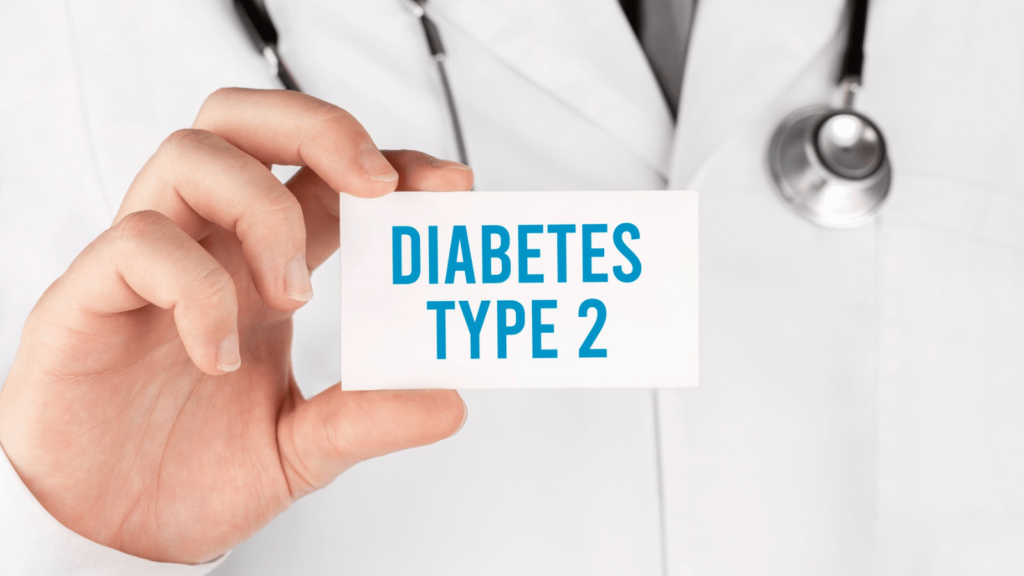
Credit: https://www.freepik.com
Why Early Detection is Crucial
The trick is, realizing the odd symptoms in early stages of diabetes that would avoid undue complication in the long term.
Your life, and your health will be very much better if you can know whether their high blood sugar symptoms are obvious or hidden. This is why early identification of diabetes can be fundamentally important:
1. Prevention of Serious Complications
Untreated or uncontrolled diabetes can affect nearly every system in the body. Continued high blood sugar can harm the lining of your nerves and organs, which may lead to such things as:
Cardiovascular Disease: High blood sugar levels can cause harm to the blood vessels further enhancing chances of cardiovascular disease and stroke in them.
Nerve damage (neuropathy): Neuropathy can lead to tingling and numbness in fingers or toes, with pain becoming severe if untreated at an early stage.
Kidney damage: The most prevalent cause of kidney disease and also extinction is related to diabetes.
Eye trouble: Elevated blood sugar can injure the vessels in your eyes causing diabetic retinopathy, cataracts or blindness.
Catch the early signs of diabetes: Slower-than-normal healing wounds, infrequent and unusual infections or blurry vision. Prevent these complications from getting much worse.
2. Better Sugar Blood Levels
Early detection is beneficial, primarily in controlling blood sugar. Even if you have Type 1 or Type 2 diabetes, detecting the signs of high blood sugar early will allow you to make changes in your daily life earlier rather than later and also start a medication treatment for reduced function insulin by injections.
This will help you control your blood sugar, protect against problems from diabetes and end of the day feel a lot better.
3. Cutting Healthcare Costs in the Long Run
Failure to treat diabetes can result in costly medical complications all of which require hospitalization, surgery or long-term care. Early identification of unusual symptoms of diabetes such as dark skin patches (acanthosis nigricans), tingling in hands and feet or frequent yeast infections can help you avoid the onset of major complications from diabetes.
Timely control of conditions will save you from expensive complex health interventions in the future, along with reducing your overall burden on health.
4. Improving Quality of Life
Untreated diabetes can really mess up your day! Fatigue, mood swings and irritability are concealed seams that appear as diabetes can deteriorate your mental health, relationships and productivity.
Identify diabetes; treat it cautiously, thus creating the power to live energetic for a long time and with cheerfulness. So not only will you feel the best in your skin, but that increased healthiness and vitality also allows you to live a more active lifestyle.
5. Decreased Likelihood of Emergency Situations
Identifying unusual symptoms of diabetes early enough can save you from emergencies and therefore aid in proper management with pills. Acute complications are heart disease, stroke and severe neuropathy related due to lack of treatment in Type 2 diabetes.
6. Informed Patients
Early diagnosis not merely saves lives but also enables the patients to keep themselves abreast with their health.
The unusual symptoms of diabetes appear to be rather unconventional compared with the other diseases.(e.g., excessive infection, diminished sight or slow-heal wounds).
That plan might involve lifestyle changes, medication or insulin therapy — depending on the type and severity of diabetes. Get ahead of diabetes early and try to gain all the more updates possible.
Don’t Ignore the Signs
Whether it is Type 1 or type 2 Diabetes, the unusual symptoms of diabetes must be recognized early to prevent any major complications.
If you are experiencing any high blood sugar symptoms be vigilant and do not wait until things get worse, schedule an appointment with a healthcare professional.
Earlier you get caught and treated, the better is your health status with a comparatively secure future.
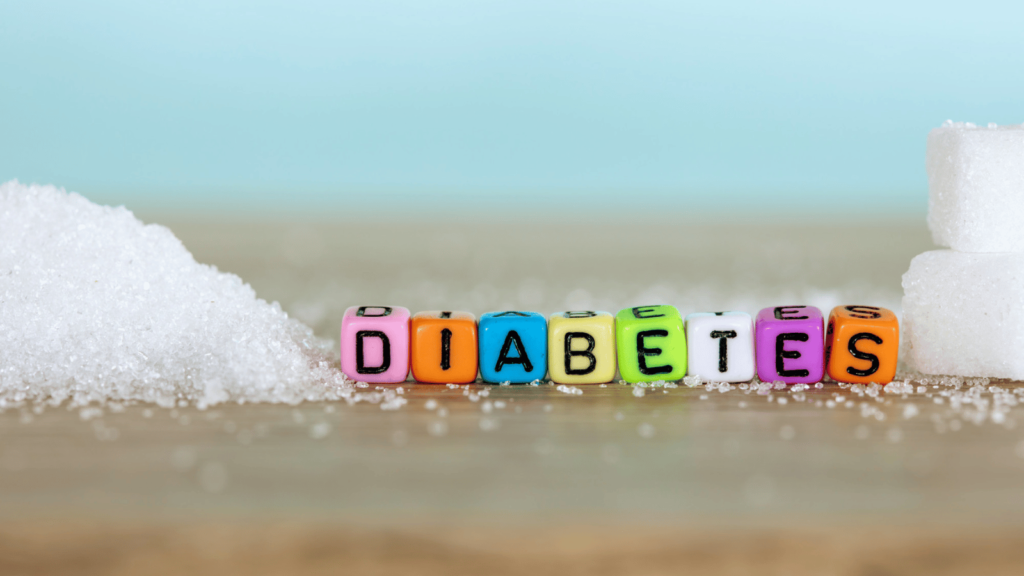
Credit: https://www.freepik.com
What to Do if You Notice These Symptoms
Do not ignore the unusual symptoms of diabetes because it may be you and others who experience this.
Rapid diagnosis and treatment can announce its seriousness, reduce the impact of many complications, and improve long-term health outcomes. How to consider the unusual symptoms of diabetes:
1. Ask a Doctor or Nutritionist
The most crucial step one must take is simply reaching out to a health professional. If you notice that something is wrong due to blurry vision, tingling in your hands or feet, other more subtle signs such as slow-healing wounds – have your blood sugar levels checked.
Your doctor can use one of three types of blood tests — fasting blood sugar, HbA1c or a glucose tolerance test — to determine if you have diabetes. The sooner you identify these unusual symptoms of diabetes, the greater your likelihood to prevent complications.
2. Monitor Your Symptoms
Begin monitoring your body as soon as possible so that the physician can get a clearer idea of what might be going on. Track the timing of symptoms, their intensity and any potential causes.
If you have symptoms of: passing urine more than usual, being thirsty all the time and having blurred vision. — These could be signs that your blood sugar levels are too high.
Symptoms that patients experience can be acutely important, because it helps your healthcare provider to make a more accurate diagnosis and provide you with an appropriate treatment plan.
3. Get Blood Tests Done
Your doctor will probably order blood tests to find out if your symptoms are a result of high diabetes and / or sugar. These tests can include:
Fasting Blood Sugar Test: It measures your blood sugar after not eating overnight.
HbA1c Test – This will indicate your blood sugar levels over the past 2-3 months and can provide you with a longer term measure of control.
Oral Glucose Tolerance Test: Measures your blood sugar levels after drinking a sugary solution.
These checks will help to understand if you are suffering from diabetes, prediabetes or other health conditions causing your symptoms. And getting these tests done in time shall prevent you from having complications later.
4. Make Lifestyle Adjustments
If your doctor confirms that you have either Type 1 or Type 2 diabetes, changing the way you live is key to managing it. So, how can you begin to make those important changes in your daily living?
Healthy Eating: Consume a nutritious, balanced diet low in high glycemic index foods (e.g. whole grains, vegetables and lean proteins) to help normalize your blood sugar levels
Physical activity: Moderate exercise helps with insulin sensitivity and blood sugar control. At least 30 minutes of moderate physical activity on most days for adults.
Weight Management: If you find your weight ballooning and are unsure why, speak with your doctor about returning closer towards a normal body mass index.
The earlier you make these changes the better, preventing Type 2 diabetes from worsening or helping to manage your Type 1 diabetes more efficiently and lowering your risk of side effects.
5. Initiation of Medications or Insulins
If your doctor diagnoses you with diabetes, it is likely that they will need to provide some sort of medication or insulin therapy depending on the type and severity.
Type 1 diabetes: People with Type 1 diabetes have little or no insulin production in their bodies, so they must use insulin therapy. If you have Type 2 diabetes, your doctor may suggest taking oral medications, insulin, or other injectable medicines that can help with symptoms of high blood sugar.
6. Check your blood sugar level regularly.
If you are diagnosed with diabetes, it is crucial to check your blood sugar regularly. It helps you monitor the effectiveness of your treatment plan and detect any changes in your condition early on.
Checking your blood sugar level is the perfect way to catch any high glucose symptoms long before we turn this into a full-blown deal.
This is even more so if you have noticed any atypical diabetes symptoms, such as numbness in your hands or feet and slow-healing wounds – which may be a signal that blood sugar control isn’t great.
7. Follow Up with Your Doctor
At each follow-up visit with your cancer care provider, this is important not only after the first time you are diagnosed and have treatment.
Diabetes is a complex and chronic disease that will evolve over time, so the initial treatment approach you take with your health care provider may need to be reevaluated.
Tell your doctor about any changes in symptoms such as more tingling and numbness in your limbs, or new signs like increased infections or skin problems. The sooner your doctor catches this tip off to diabetes, the earlier they can take steps to adjust your treatment regimen.
Take Action Early
Unusual Symptoms of Diabetes — Blurry vision, frequent infections and other symptoms that tend to be benign or common can actually indicate early signs of high blood sugar levels which require medical treatment.
The right tests and outcomes will help you to get your symptoms under control effectively as take appropriate preventative actions. This is why early detection followed by appropriate management can be the key to living well with diabetes.
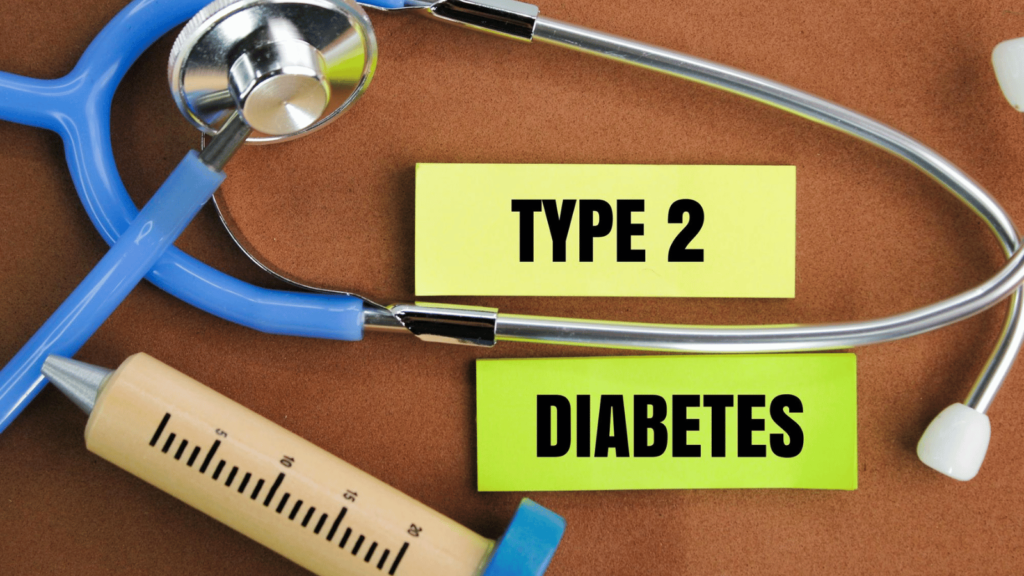
Credit: https://www.freepik.com
Why These Symptoms Are Often Overlooked
For whatever reason, the often unusual symptoms of diabetes can easily go unnoticed. Most people do not know that small changes in your body (sometimes simply skin darkening, sometimes tingling of hands or feet etc.) may indicate elevated blood sugar values.
Sounds to me that understanding why the hidden symptoms are often overlooked is important if we want to raise awareness.
1. Subtle and Gradual Onset
In fact, one of the key reasons that the unusual symptoms of diabetes remain undiagnosed is they can evolve so subtly over time (especially in Type 2 cases).
People with Type 2 diabetes typically present to their family medicine doctor, for example, over a period of months or years . Because of its gradual progression, people can easily miss or mistake symptoms for other things (old age, stress and busy lifestyle), such as fatigue or blurry vision.
Symptoms of high blood sugar, such as increased thirst or frequent urination may begin so mildly that people dismiss them until a condition worsens. This is why it can stay undiagnosed for years as their bodies suffer gradual damage while they go on not realizing this.
2. Mimickers
The hallmark of diabetes is a high blood sugar which your doctor does not see unless you check, but hidden symptoms mimic less serious health conditions and these are recognized as signs to watch for. For example:
It is possible that more candida infections or breakouts are related to hormonal imbalances, stress and not necessarily high blood sugar.
Neuropathy (tingling or numbness in the hands and feet) is often misdiagnosed as a circulatory issue, and pain may be mistaken for mere nerve compression due to sleeping “wrong”.
Tiredness is often blamed for blurry vision, staring at screens too long or needing new glass.
The unusual symptoms of diabetes can cause individuals to delay medical assistance, assuming the signs as temporary or not interconnected.
3. Lack of Awareness
A second major reason why the unusual symptoms of diabetes are underdiagnosed relates largely to this lack of awareness. While many people are aware of the more recognizable symptoms associated with diabetes such as needing to drink and pee a lot, there may still be lesser known signs.
They might not connect the dots to high blood sugar when they experience early warning signs of diabetes — such as frequent infections or unexplained weight changes. The consequences are individuals not knowing they have it until symptoms present too late, leading to more advanced disease.
4. Attributing Symptoms to Aging
Although unusual symptoms are likely to be noticed by most adults, the problem is that things such as fatigue, joint pain and weight gain are all too easily put down to getting old rather than symptoms of high blood sugar.
Similarly, older adults may believe that slow-healing wounds or the tingling in their hands and feet are related to age instead of being warning signs for diabetes. It can lead to the high blood sugar symptoms going untreated for years, and delay diagnosis as a result.
5. Symptom Denial
One of the reasons that these unusual symptoms of diabetes are often dismissed is due to denial.
Perhaps they experience symptoms, like chronic fatigue or frequent infections or blurry vision that their selves come to sense eventually but refuse (or are scared) coming face to face with the idea of a possible diabetes.
For months, people might not see a doctor because they have experienced these feelings before and possibly find the symptoms temporary or too minor to be connected with something as awful as diabetes.
Sadly this can lead to any number of severe complications that go undiagnosed after years of having high blood sugar symptoms before their body’s give up and they have a heart attack, neuropathy or vision loss in one eye…
6.Silent Danger:
CDC officials said they would have expected the spike in deaths to come earlier if many of those cases were simply asymptomatic.
Although folks with type 2 diabetes may present symptoms of high blood sugar, the scenario can also be relatively symptom free for a long time.
As a result, the atypical manifestations of diabetes that would normally have revealed themselves sooner simply due to onset timing may not appear until much later in this timeline.
Prediabetes or type 2 diabetics just starting to become symptomatic may feel no different, which can be deceiving.
7. Inconsistent Symptoms
A number of the different symptoms associated with diabetes can be sporadic, or intermittent which performs to additional conceal them. For example:
The vision starts to blur (which may alternate with the blood sugar level, causing people not to feel it too serious).
Some days you might be peeing more, which may lead you to write the whole situation off as a transient issue.
This variation in symptoms can make it more difficult for individuals to identify a pattern or attribute them to high blood sugar, leading to delayed diagnosis and treatment.
Don’t Ignore the Subtle Signs
Unusual symptoms of diabetes are often ignored as they may be mild, resemble other conditions or manifest slowly. But, we must pay heed to these signs and not take them for granted.
Warning signs of diabetes like infections, fatigue or wounds that take a long time to heal must not be ignored and you should go for medical consultation as soon as possible.
Well, my friends… that wraps up your post about unusual symptoms of diabetes.
Conclusion: Stay Aware and Take Action
Diabetes can have strange symptoms — it’s just that they tend to be subtle in nature; more insidious than well-known but often ignored until they become far less manageable and infinitely worse.
If you know what to look for, and take prompt action. It is possible that you can catch diabetes in the early stages when effective management becomes much more achievable.
Type 1 diabetes can present faster and worse, while type 2 is a disease that develops slowly. No matter the kind, early diagnosis is key to preventing future complications such as heart disease, nerve damage and kidney issues.
The sooner you can recognize these symptoms and receive treatment, the better chance you may have to control your blood sugar through lifestyle changes or medication.
If you experience symptoms, consult a health professional to determine whether they are associated with high blood sugars and act accordingly.
Because early intervention is key to continuing to live a healthy, active life with diabetes. So remain vigilant, stay informed and act!
